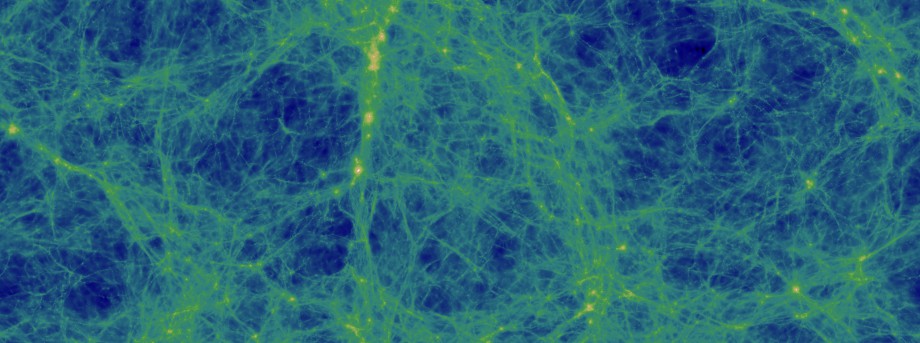The University of Nottingham
 Exchange online
Exchange online
Research Exchange
Modelling the early universe

One of the world’s most powerful supercomputers is to enable astrophysicists at The University of Nottingham to build a sophisticated simulation of the early universe.
Dr James Bolton and Dr Frazer Pearce, in the University’s School of Physics and Astronomy — leading a team of European academics — have been granted access to Curie, one of the twenty most powerful machines in the world based at Très Grand Centre de Calcul du CEA near Paris.
Curie has more than 92,000 computer units and offers 2 petaflops of power — the equivalent of 2 million billion operations per second. The researchers have been awarded 15million core hours over 12 months on Curie by the Partnership for Advanced Computing in Europe (PRACE), a resource worth the equivalent of around €750,000.
Dr Frazer Pearce said: “We are delighted to have won this award as it will enable us to answer fundamental questions about the nature of the early universe.”
Quasars, hugely powerful sources of energy in the distant Universe, act like giant searchlights and illuminate a forest of gas clouds. By counting the number of these intervening clouds of gas scientists can perform a cosmic census to distinguish between different models of our Universe.
The Nottingham scientists, working with colleagues at the universities of Cambridge, Edinburgh, Helsinki and Trieste, will build a simulation of our Universe on Curie and analyse this model in a similar way to an actual observation.
By doing so, they will gain valuable insights into the properties of dark matter and the interplay between gas and galaxies in the very early Universe. Such work has been hampered in the past because scientists have been unable to build a simulation large enough to contain the full range of structures that we know exist in the Universe. This has significantly limited the use of these models when confronted with observational data, and requires large corrections to be applied to the simulation results.
This PRACE project aims to overcome these issues, by bridging the important gap between small and large scales with a suite of the highest resolution Lyman-alpha forest (gas cloud) simulations performed to date within large volumes.
Dr Bolton and Dr Pearce are both based at the University of Nottingham’Centre for Astronomy and Particle Theory and use the university’s own High Performance Computing Facility, which offers academics from across the institution the opportunity to use a cluster of powerful computers that can work together to drastically reduce the time required to perform large scale calculations. It has the potential to take a calculation that would last a year on a single PC, and provide the answer in a few hours. Alternatively, it can do many hundreds of smaller calculations simultaneously, depending on user requirements.
Since its launch in 2007, the HPC facility has assisted academics on projects worth in the region of £27 million in grant income.
Professor Saul Tendler, Pro-Vice-Chancellor for Research at The University of Nottingham, said: “The University of Nottingham has had a strong commitment to High Performance Computing for many years, keeping its researchers at the forefront of the computational aspects of their disciplines.
“Nottingham’s own facility not only provides key research infrastructure, but also serves as a springboard for access to national and European supercomputers as well as allowing Nottingham to attract world class researchers such as Dr Bolton.”
Competition to win time on Curie was fierce — technical experts from PRACE evaluated the 141 submitted proposals, followed by a review on scientific excellence by three independent reviewers. On the basis of this, the proposals were whittled down to just 44 successful proposals fro across Europe.
Tags: Frazer Pearce, High Performance Computing facility, James Bolton, Partnership for Advanced Computing in Europe, petaflop, School of Physics and Astronomy
Leave a Reply
Other News

Top prize for quantum physicist
A University of Nottingham physicist has won a prestigious medal from the Institute of Physics for […]

Zero carbon HOUSE designed and built by students comes home
Design and construct a low cost, zero carbon, family starter home, transport it to Spain, build […]